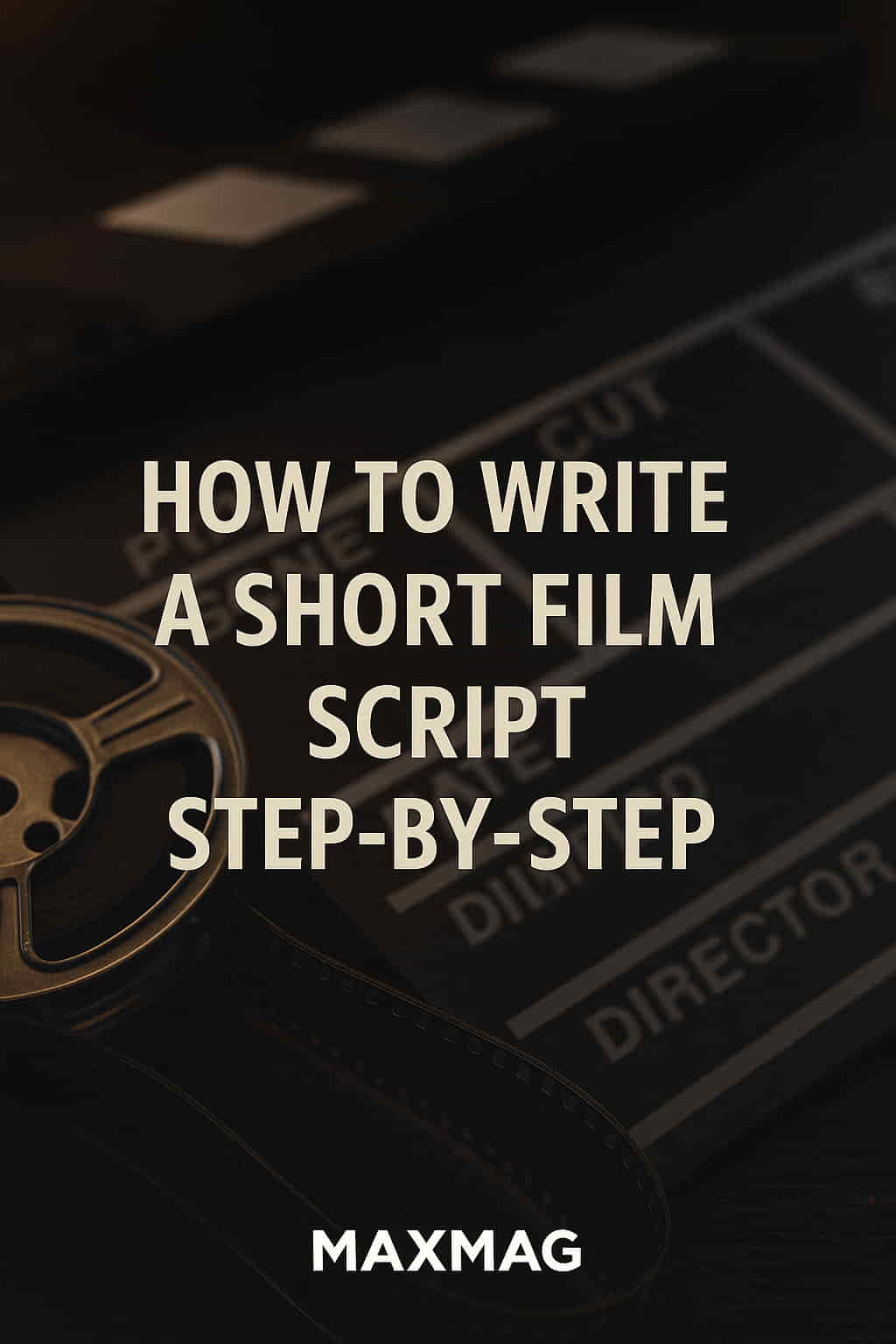
Writing a short film script can feel intimidating, especially when you’re just starting out. But the truth is, great short films don’t begin with budgets or fancy gear—they begin with a solid script. If you’ve ever wondered how to write a short film script step-by-step, this guide will walk you through everything you need to know—from concept to final draft—with practical tips, clear examples, and free tools to help you get started.
Whether you’re a film student, aspiring screenwriter, or indie creator ready to tell a story, this process will help you craft a script that’s tight, visual, and production-ready.
Step 1: Start With a Simple, Focused Idea
Short films thrive on simplicity. Unlike features, which allow room to explore multiple subplots, short films need to deliver a strong emotional or thematic punch quickly.
Here’s how to find your core idea:
-
Choose one main conflict or emotional arc.
-
Limit the number of characters (2–3 max is ideal).
-
Use one or two locations to keep it manageable.
Example:
A teenager breaks into a smart home only to realize the AI system won’t let him leave until he confesses a crime.
This idea is tight, intriguing, and confined—perfect for short film storytelling.
Step 2: Write a One-Sentence Logline
Your logline is the story boiled down to its essence. It keeps you focused and helps others quickly understand what your short film is about.
Structure of a logline:
-
Who is the protagonist?
-
What do they want?
-
What obstacle stands in their way?
Example:
A lonely night guard discovers an injured alien and must decide whether to hide it or turn it in.
Keep it brief. If you can’t explain your idea in one sentence, your story may be too complex for a short format.
Step 3: Outline With a Beat Sheet
A beat sheet is a simple outline that maps out the key moments in your story. For short films, think in terms of 3–5 key beats.
Basic structure for a short film:
-
Opening/Setup – Introduce the main character and situation.
-
Inciting Incident – Something changes or disrupts the norm.
-
Confrontation – The character faces an obstacle or choice.
-
Climax – The most intense moment; the turning point.
-
Resolution – A clear ending that offers closure or a twist.
Tip: If you’re writing a 5-minute film, aim for one page per beat.
Step 4: Create Brief but Vivid Characters
With limited screen time, you don’t need detailed backstories. But you do need characters that feel real, even in a few lines of dialogue.
Tips for strong characters:
-
Give them a goal or motivation.
-
Use contrast—pair opposites for tension.
-
Show their personality through action, not exposition.
Example:
Instead of writing “James is angry,” write “James crushes the empty coffee cup in his hand and storms out without a word.”
This shows who he is without telling the audience directly.
Step 5: Format Your Script Like a Pro
Industry-standard formatting matters. A clean, professional script shows you’re serious and helps actors, directors, and crew understand the flow.
🎬 Basic elements of a script:
-
Scene Heading (Slug Line):
INT. KITCHEN – NIGHT -
Action/Description:
Describe what we see and hear. -
Character Name:
Centered above the dialogue. -
Dialogue:
Short, natural lines.
Use free screenwriting software like:
Here’s a quick sample:
Step 6: Edit Ruthlessly and Get Feedback
The first draft is rarely perfect—and that’s okay. The real writing happens in rewriting.
How to revise like a pro:
-
Cut unnecessary dialogue—every line should serve a purpose.
-
Read it aloud—you’ll spot awkward phrasing and pacing issues.
-
Get outside feedback—join a screenwriting group or share with fellow creatives.
Use this checklist:
-
Does the story build tension?
-
Are the characters believable?
-
Does each scene move the story forward?
-
Is the ending satisfying or thought-provoking?
Step 7: Prepare Your Final Script for Submission or Shooting
Once your script is polished, it’s time to get it ready for the next step—whether that’s entering festivals, sharing with collaborators, or prepping for a shoot.
Final prep tips:
-
Export your script as a PDF.
-
Include a title page with your name and contact.
-
Name your file clearly:
The_Watcher_FinalScript_AmithSai.pdf -
Double-check formatting consistency.
Bonus: Free Resources for Aspiring Screenwriters
If you’re still learning, there are excellent free tools to sharpen your skills:
-
BBC Writersroom – Download free script templates and read actual broadcast scripts.
-
Go Into The Story – Deep dives into screenwriting craft and structure.
-
Film Shortage – Watch acclaimed short films to understand pacing and structure.
-
Trello – Organize scenes and character arcs visually.
Frequently Asked Questions (FAQ)
Q: How many pages should a short film script be?
Most short scripts are between 3 and 10 pages, corresponding to 3–10 minutes on screen.
Q: Do I need expensive software to write scripts?
Not at all. Tools like WriterDuet and Celtx offer free versions with all essential features.
Q: Should I register my script for copyright?
Yes—especially if you plan to submit it publicly. US-based writers can register with the Library of Congress.
Q: Can I write a short film script without film school experience?
Absolutely. Many acclaimed shorts are made by self-taught writers using passion, structure, and clear storytelling.






